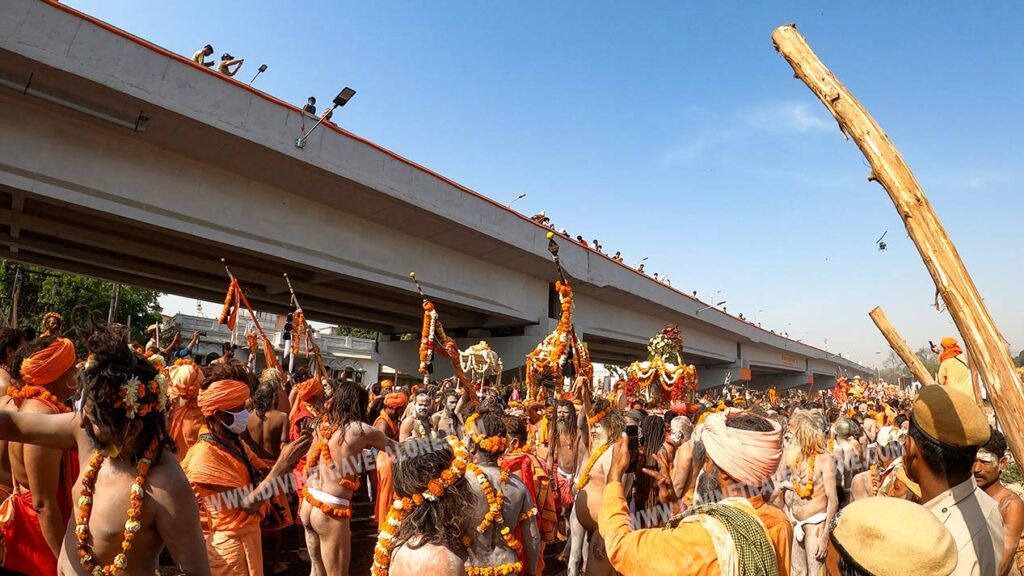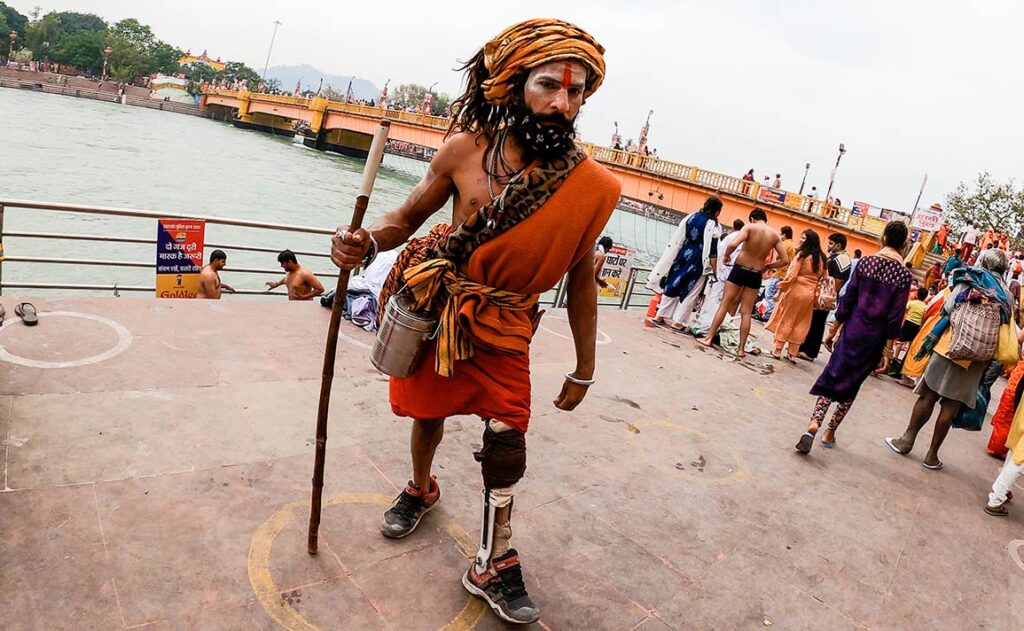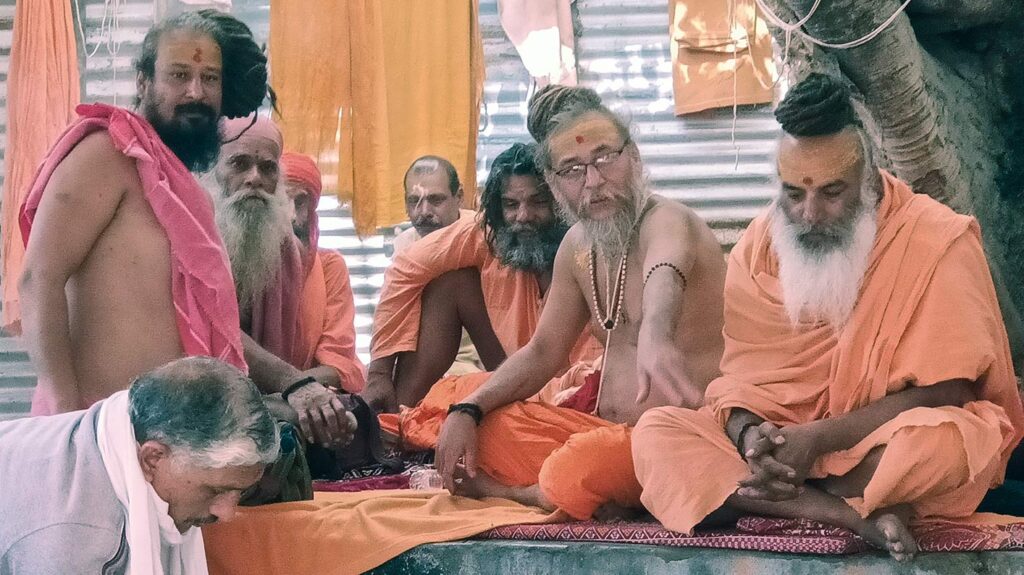Kumbh Mela Prayagraj 2025
Snan Dates, Significance and History & Importance of Akharas

Kumbh Mela is a unique religious event eagerly awaited by millions of devotees and saints. Preparations for the upcoming Prayagraj Kumbh Mela 2025 have already begun. This event is not only a major festival for saints and sages but also a significant part of their spiritual and religious life. For saints, the Kumbh Mela is an important opportunity where they celebrate, display their martial arts, and share their penance, knowledge, and traditions with the general public.
In this Blog, we will discuss the bathing dates for Kumbh Mela 2025, its significance, and the history and role of the Akharas in detail.

Bathing Dates - Kumbh Mela 2025
- Paush Purnima (Important Bath): 13 January 2025
- Makar Sankranti (Shahi Snan): 14 January 2025
- Mauni Amavasya (Shahi Snan): 29 January 2025
- Basant Panchami (Shahi Snan): 3 February 2025
- Achala Saptami (Important Bath): 4 February 2025
- Maghi Purnima (Important Bath): 12 February 2025
- Mahashivratri (Important Bath): 26 February 2025
Significance and Religious Importance of Kumbh Mela
Kumbh Mela is one of the largest religious gatherings in Hinduism. It is held every 12 years at four holy locations: Haridwar, Prayagraj, Ujjain, and Nasik. It is believed that taking a dip in the sacred rivers during the Kumbh Mela cleanses all sins and leads to salvation (moksha). Millions of devotees and saints gather during this event, enhancing its divinity and significance.

Katha (Story) of Kumbh Mela
First Story:- This story is related to Garuda obtaining the elixir (Amrit) to free his mother from servitude to Kadru, the mother of serpents. According to the story, Garuda went to heaven to retrieve the nectar for his mother. At that time, Indra, the king of the gods, was not present, and Garuda defeated the other gods and took the pot of nectar. When Garuda was carrying the pot of nectar to the serpents, Indra pursued him and tried to seize the nectar. During this tussle, a few drops of the nectar fell at four sacred places—Haridwar, Prayagraj, Ujjain, and Nashik.
Second Story:- The second story is related to the churning of the ocean (Samudra Manthan). It is said that the gods and demons churned the ocean together to obtain the nectar of immortality (Amrit). During the churning, a pot (Kumbh) of nectar emerged, leading to a struggle between the gods and demons over its possession. During this battle, a few drops of nectar fell at the four places—Haridwar, Prayagraj, Ujjain, and Nashik.
Among these, the first story, where Garuda obtained the nectar and a few drops fell during the struggle with Indra, is more commonly accepted and widely known.
According to this story, bathing and donating at these places during the Kumbh Mela is believed to grant freedom from sins and salvation. The significance and grandeur of this divine event make it one of the largest religious gatherings in Hinduism.

Kumbh Mela: The Grand Festival of Sages
Kumbh Mela is particularly known as a festival for saints and sages. Saints from across the country and abroad eagerly await this event, as it holds great religious significance for them. During the royal bathing (Shahi Snan), the procession of the saints from various Akharas is a sight to behold. These saints are not only well-versed in religious teachings but also showcase their mastery in martial arts. The grand procession and royal bathing of the saints are defining features of the Kumbh Mela.
History, Importance and Expansion of Akharas
Akharas hold a special place in the Kumbh Mela. The meaning, origin, and expansion of the Akharas are as follows:
Meaning of Akhara: The word ‘Akhara’ is derived from ‘Akhand,’ meaning an unbroken organization. It refers to a group of ascetics who are proficient in both religious teachings and martial arts.
Origin: When Jain, Buddhist, and Muslim sects emerged in India, Hinduism faced a threat. To protect the faith, the Akharas were established. These Akharas not only preserved the tradition of knowledge but also provided training in weaponry to counter foreign invasions.
Expansion: The ascetics from the northern region of India to the banks of the Godavari River are classified into 13 groups, known as the 13 Akharas. These Akharas are mainly of three types:
Shaiva (Dashanami) Akharas: These are seven in number: Maha Nirvani, Juna (Bhairav), Avahan, Agni, Niranjani, Atal, and Anand.
Adi Shankaracharya divided the Shaiva ascetics into ten groups: Giri, Puri, Bharati, Tirtha, Ban, Aranya, Parvat, Ashram, Sagar, and Saraswati. These are known as ‘Dashanami Akharas.’ They practice both religious teachings and martial arts.
Vaishnav Akharas: There are three major Akharas: Digambar, Nirmohi, and Nirvani.
Disciples of Jagadguru Shri Ramanandacharya established three Vaishnav Akharas by uniting four Vaishnav religious orders. These Akharas focus on both martial training and the study of religious texts, dedicated to protecting religion and temples.
Udasin Akharas: There are two Udasin Akharas—Udasin Panchayati Bara Akhara and Udasin Panchayati Naya Akhara.
Additionally, the Nirmal Akhara of the Sikhs, inspired by Guru Gobind Singh Ji, is also considered an Udasin Akhara.

My 2021 Kumbh Mela Experience
The Prayagraj Kumbh Mela 2025 will be my second experience with Kumbh Mela. I previously attended the 2021 Kumbh Mela in Haridwar, and it was a divine experience. I took a holy dip in the Ganges and witnessed the grandeur of the royal bathing of the saints. The spiritual energy and tranquility in the atmosphere were unforgettable. This time, I am looking forward to experiencing the same divinity at the Prayagraj Kumbh.
Written at 19-10-2024
Follow my Journey..!
Beautiful Tourist Places, Adventure Spots, Religious Places and much more…You can simply watch all the Travel Vlog by click the “subscribe” button below.
You cannot copy content of this page



